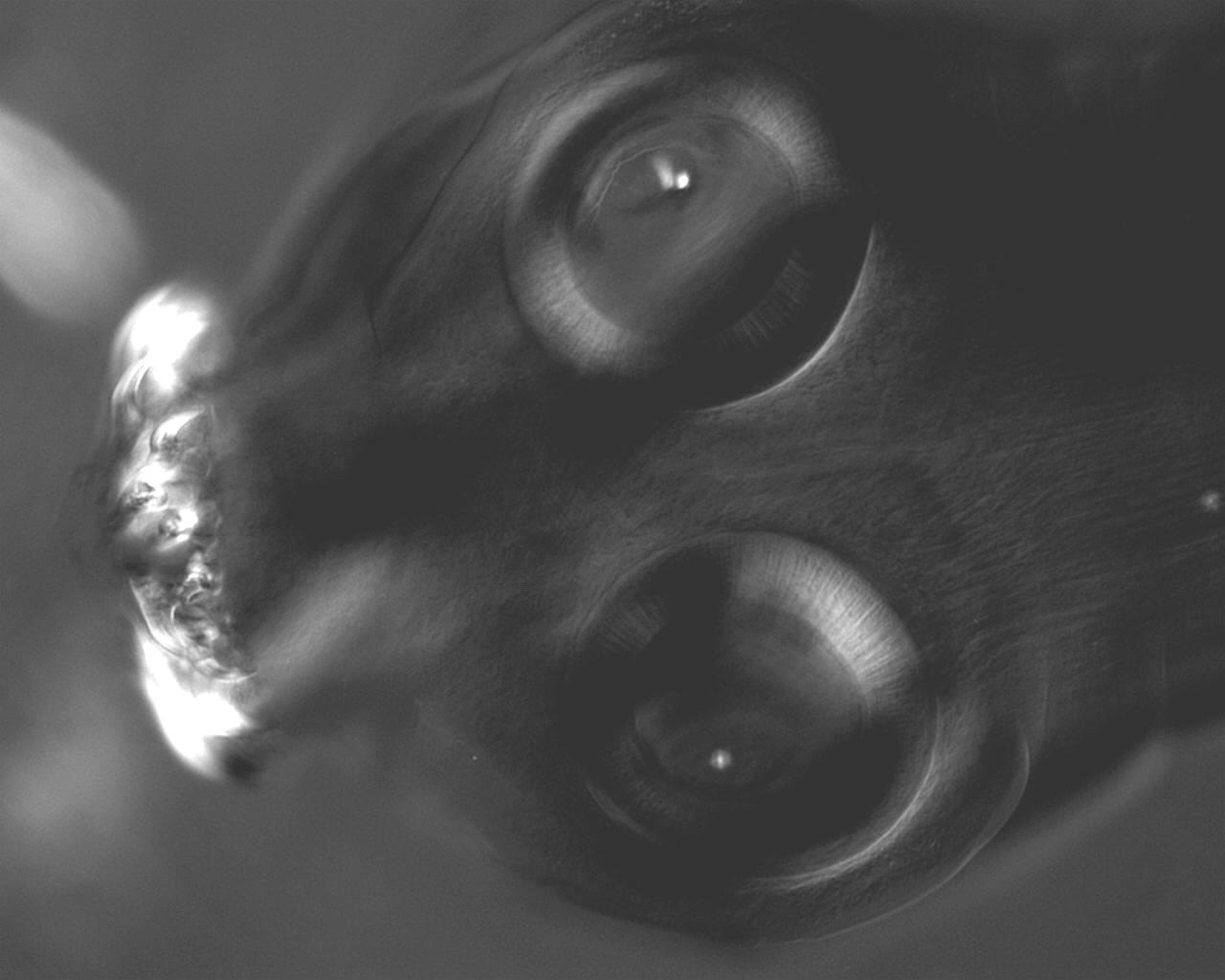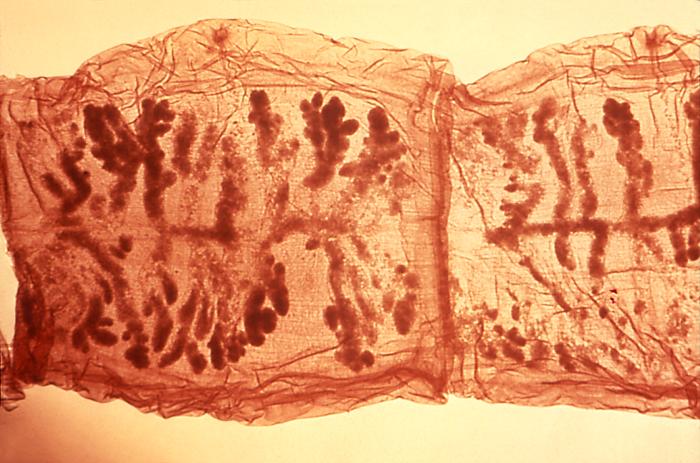Morphology
T. solium specimens (anterior end on the right)
Scolex
At the anterior end of T. solium, known as the scolex, is used to attach the organism to the inside of a human's small intestine, and anchor it so it can feed on the nutrients in our digestive tract.

T. solium scolex
The scolex of T. solium features four suckers and a double row of hooks to attach to the intestine.
Strobilla
The flat ribbon-like body that makes up the rest of the organism is the strobilla, which is comprised of proglottids, which contain both male and female reproductive organs. Basically, a tapeworm is comprised almost completely of gonads, which means that it is very efficient at reproduction. The tapeworm will shed proglottids to be excreted by the host in its feces, which is an integral step in the life cycle, because the proglottids are totipotent, and if ingested by an intermediate host, will form the larval stage to continue the cycle.
T. solium proglottids (monoecious)
